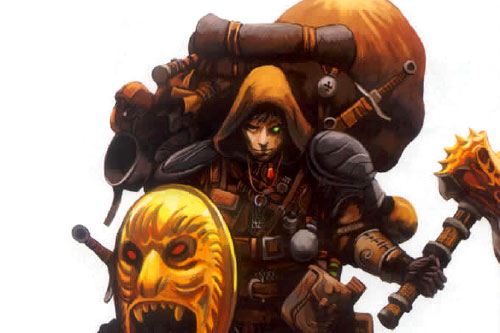So I was knocking around some of the suggestions from the 4th edition Dungeon Master’s Guide regarding the distribution of treasure. When following the advice of the DMG, a DM basically ends up distributing one less magic item than there are player characters every level, each of increasing level-value (level +1 … L+4). For four characters, the book recommends dropping the level+2 item, yielding an item output of L+1, L+3, and L+4 by the time the party advances.
As an issue of basic fairness, you wouldn’t want the person who got the level +4 item (ostensibly the coolest material reward that level) to also get the most super-neato-von-awesome stuff during the following level. It seems to me that a round-robin approach makes a lot of sense. But which direction to spin the wheel? Does the character that got the L+4 item this time get the L+3 item next time? Then the L+1? This would allow whoever missed out to get the L+4 next time. It also means that starting at 1st level, some guy is going to end up with multiple same-level items repeatedly during his career. Odd.
Here’s how the downward-stepping round-robin breaks down:
| Level | Player A | Player B | Player C | Player D |
|---|---|---|---|---|
| 1st | – | 2 | 4 | 5 |
| 2nd | 6 | – | 3 | 5 |
| 3rd | 6 | 7 | – | 4 |
| 4th | 5 | 7 | 8 | – |
| 5th | – | 6 | 8 | 9 |
| 6th | 10 | – | 7 | 9 |
And so forth. An upward-stepping round-robin goes like this:
| Level | Player A | Player B | Player C | Player D |
|---|---|---|---|---|
| 1st | – | 2 | 4 | 5 |
| 2nd | 3 | 5 | 6 | – |
| 3rd | 6 | 7 | – | 4 |
| 4th | 8 | – | 5 | 7 |
| 5th | – | 6 | 8 | 9 |
| 6th | 7 | 9 | 10 | – |
In both cases, naturally, the same number of items show up, of the same power levels, at the same rate. When descending, an individual’s gear clusters up into tight little clusters of general potency. When ascending there’s a lot more scatter.
Descending, I observe that if you look at each character’s best gear (at the tail end of level 6), Player A gets at 10th and 6th level item, Player B gets two 7th level items, Player C gets two 8th level items, and player D gets two 9th level items. All else being equal, I’d expect Player B to feel a little put-out at that point.
Ascended, Player A gets and 8th and a 7th level item, Player B gets a 9th and a 7th level item, Player C gets a 10th and 8th level item, and Player D gets a 9th and a 7th. Player A is right behind the pack and player C is a little ahead. I suspect this is the approach that would be most likely to yield a defensible appearance of fairness at the game table.
